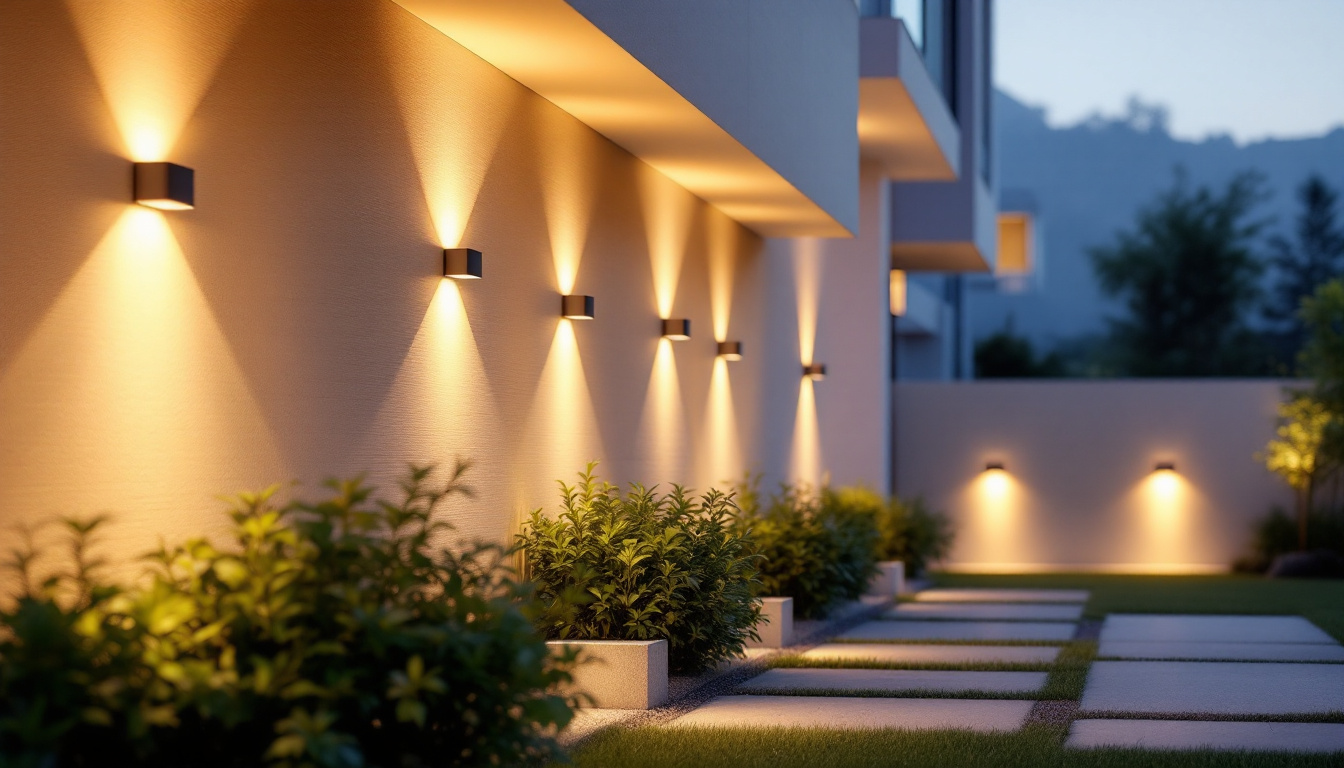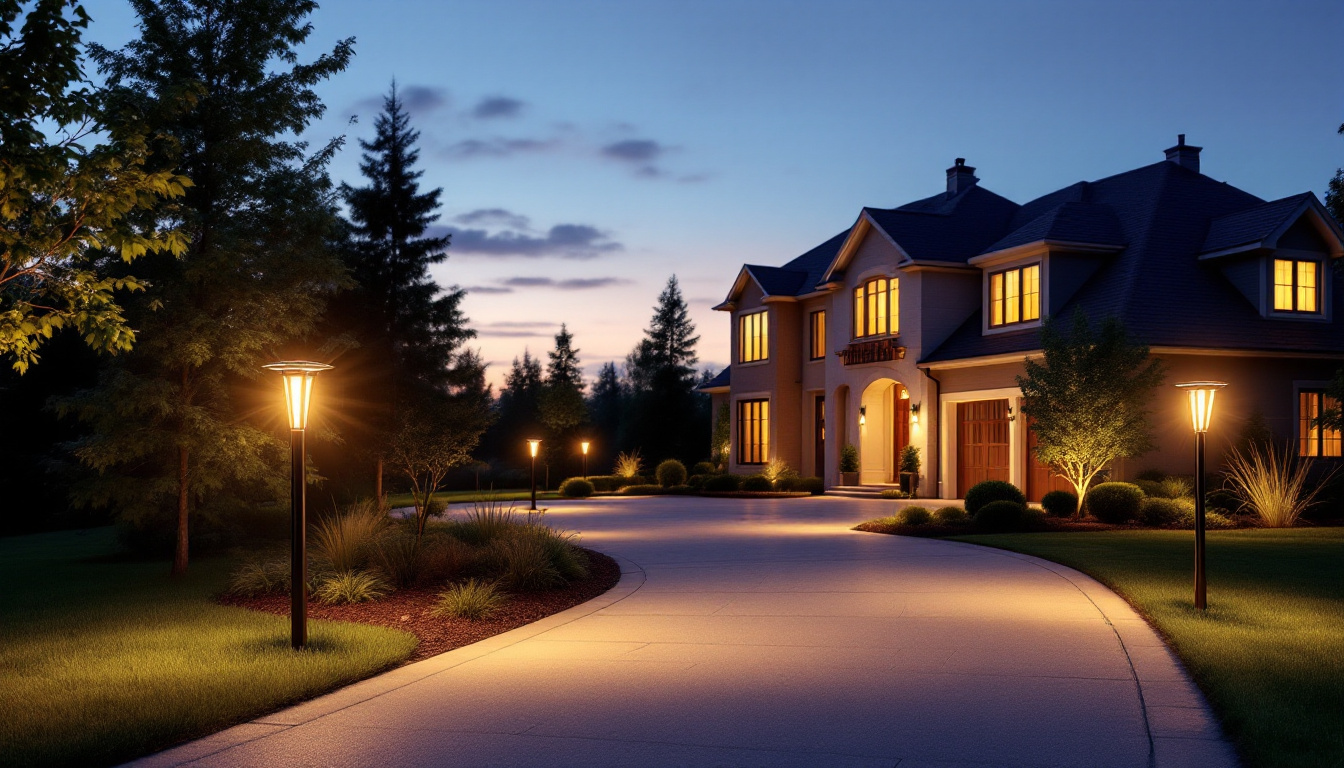
In the realm of outdoor lighting, motion-activated lights are often overlooked, yet they play a crucial role in enhancing safety, security, and energy efficiency. For lighting contractors, understanding the benefits and applications of these lights can significantly elevate the quality of projects. This article delves into the various aspects of motion-activated outdoor lights, highlighting their importance in modern lighting designs.
Motion-activated outdoor lights are designed to illuminate an area when they detect movement, making them an ideal solution for various applications. They utilize passive infrared (PIR) sensors or microwave sensors to detect motion, triggering the light to turn on for a predetermined duration. This functionality not only provides convenience but also enhances security by deterring potential intruders. The presence of these lights can create a welcoming atmosphere for guests while simultaneously ensuring that dark corners of your property are well-lit, reducing the risk of accidents or unwanted incidents.
The technology behind motion-activated lights is relatively straightforward. PIR sensors detect changes in infrared radiation, which occurs when a warm body, such as a person or animal, moves within the sensor’s range. Once motion is detected, the light activates, often remaining on for a set period before turning off automatically. This feature helps conserve energy, as the lights are only on when needed. Additionally, many modern motion-activated lights come equipped with adjustable sensitivity settings, allowing homeowners to customize how sensitive the sensors are to movement, which can help minimize false alarms caused by passing cars or small animals.
There are primarily two types of motion sensors used in outdoor lighting: passive infrared (PIR) and microwave sensors. PIR sensors are the most common, as they are cost-effective and efficient for detecting movement within a specific range. Microwave sensors, on the other hand, emit microwave signals and can detect motion through walls and other obstacles, making them suitable for more complex installations. Some advanced models even combine both technologies, offering enhanced detection capabilities and reducing the likelihood of missed alerts, which can be particularly beneficial in larger properties or areas with varied terrain.
These lights are versatile and can be used in various settings, including residential, commercial, and industrial environments. They are particularly effective in driveways, pathways, patios, and entryways, providing illumination when it is most needed. Additionally, they can be integrated into security systems, enhancing the overall safety of a property. Beyond security, motion-activated lights can also serve practical purposes, such as illuminating pathways for late-night arrivals or providing light for outdoor gatherings, ensuring that spaces are both functional and inviting. Furthermore, with the rise of smart home technology, many motion-activated lights can now be controlled remotely via smartphone apps, allowing users to monitor and manage their outdoor lighting from anywhere, adding an extra layer of convenience and control to outdoor spaces.
Incorporating motion-activated outdoor lights into lighting projects offers numerous advantages. From energy savings to increased security, these lights can significantly enhance the overall functionality of outdoor spaces.
One of the most compelling benefits of motion-activated lights is their energy efficiency. Since they only activate when movement is detected, they reduce unnecessary energy consumption. This feature is particularly beneficial for areas that may not require constant illumination, such as backyards or side entrances. By minimizing energy use, contractors can provide clients with cost-effective solutions that align with sustainability goals. Additionally, many modern motion-activated lights are equipped with LED technology, which further enhances their energy-saving capabilities. LEDs consume significantly less power than traditional incandescent bulbs and have a longer lifespan, making them an ideal choice for outdoor applications where replacement can be cumbersome.
Motion-activated lights serve as a powerful deterrent against crime. The sudden illumination of an area can startle potential intruders, making them think twice before approaching a property. For homeowners and business owners alike, this added layer of security can provide peace of mind, knowing that their property is better protected. For contractors, emphasizing the security benefits of these lights can be a strong selling point. Furthermore, many models come with adjustable sensitivity settings, allowing users to customize how far away the sensor detects movement. This feature can help avoid false alarms caused by small animals or passing vehicles, ensuring that the lights only activate when truly needed, thus enhancing the overall effectiveness of the security system.
In addition to security, motion-activated lights enhance convenience and safety for users. Whether returning home late at night or navigating a dark pathway, these lights provide instant illumination, reducing the risk of accidents. For contractors, highlighting this convenience can resonate with clients looking to improve the functionality of their outdoor spaces. Moreover, many motion-activated lights can be integrated with smart home systems, allowing users to control them remotely via smartphone apps. This added level of control not only enhances convenience but also enables users to monitor their outdoor areas in real-time, ensuring they feel secure and informed about their surroundings at all times. The ability to program lighting schedules or adjust settings from anywhere adds a layer of modern convenience that many homeowners find appealing.
While motion-activated outdoor lights offer numerous benefits, there are several considerations that lighting contractors should keep in mind during installation. Proper placement, sensitivity settings, and integration with existing lighting systems are crucial for maximizing effectiveness.
The placement of motion-activated lights is critical for optimal performance. Contractors should assess the area to determine the best locations for installation, ensuring that the sensors have a clear line of sight to detect movement. Common placements include near entry points, along pathways, and in areas with high foot traffic. Additionally, considering the coverage area of each light can help ensure that no dark spots remain.
Most motion-activated lights come with adjustable sensitivity settings, allowing contractors to tailor the activation range to the specific environment. For example, in areas with frequent animal movement, lowering the sensitivity can prevent false activations. Conversely, in high-traffic areas, increasing sensitivity can ensure that the lights activate promptly when needed. Properly adjusting these settings can enhance the overall effectiveness of the lighting system.
Integrating motion-activated lights with other outdoor lighting systems can create a cohesive and functional lighting design. For instance, combining these lights with ambient lighting can provide a balanced illumination scheme, enhancing both aesthetics and functionality. Contractors should consider how motion-activated lights can complement existing fixtures, creating a seamless outdoor lighting experience.
Selecting the appropriate motion-activated lights for a project involves considering various factors, including brightness, design, and features. Contractors must evaluate the specific needs of each project to recommend the best solutions.
Brightness is a crucial factor when choosing motion-activated outdoor lights. The lumen output will determine how well the light illuminates the area. For pathways and entryways, lights with a moderate lumen output may suffice, while larger areas may require higher lumen levels for effective coverage. Contractors should assess the intended use of the lights to recommend the appropriate brightness for each application.
While functionality is essential, the design and aesthetics of motion-activated lights should not be overlooked. These lights come in various styles, colors, and finishes, allowing contractors to match them with the overall design of the property. A well-chosen light fixture can enhance the visual appeal of an outdoor space while providing the necessary illumination.
Many modern motion-activated lights come equipped with additional features, such as adjustable timers, dimming capabilities, and even smart technology integration. These features can enhance the user experience and provide added convenience. Contractors should stay informed about the latest advancements in motion-activated lighting technology to offer clients the best options available.
While motion-activated outdoor lights offer numerous benefits, they can also present challenges during installation and use. Understanding these challenges and their solutions can help contractors navigate potential issues effectively.
One common challenge with motion-activated lights is false activations caused by environmental factors, such as wind, rain, or passing animals. To mitigate this issue, contractors can recommend lights with adjustable sensitivity settings, allowing users to fine-tune the activation range. Additionally, strategically placing the lights away from areas prone to movement can help reduce false activations.
Another challenge is the limited detection range of some motion sensors. If the coverage area is insufficient, certain areas may remain unlit. Contractors should carefully assess the space and recommend lights with appropriate detection ranges to ensure comprehensive coverage. In some cases, installing multiple lights may be necessary to achieve optimal illumination.
Regular maintenance is essential for ensuring the longevity and functionality of motion-activated lights. Contractors should advise clients on the importance of keeping sensors clean and unobstructed. Additionally, selecting high-quality fixtures with durable materials can enhance the lifespan of the lights, reducing the need for frequent replacements.
Motion-activated outdoor lights are an invaluable addition to many lighting projects, offering enhanced security, energy efficiency, and convenience. For lighting contractors, understanding the technology, benefits, and applications of these lights can lead to more successful projects and satisfied clients. By incorporating motion-activated lights into designs, contractors can create safer, more functional outdoor spaces that meet the evolving needs of homeowners and businesses alike.
As the demand for innovative lighting solutions continues to grow, motion-activated outdoor lights stand out as a key component in modern lighting design. By staying informed about the latest technologies and trends, contractors can position themselves as leaders in the industry, ready to deliver exceptional results that exceed client expectations.
Ready to enhance your lighting projects with the security, efficiency, and convenience of motion-activated outdoor lights? At LumenWholesale, we provide lighting contractors with the highest quality, spec-grade lighting products at prices that can’t be beaten. Say goodbye to inflated markups and hello to our extensive selection that meets rigorous industry standards. With free shipping on bulk orders, you can trust that you’re getting premium lighting at the best value — all without hidden fees. Elevate your lighting designs today and experience the LumenWholesale difference. Wholesale Lighting at the Best Value.

Discover essential tips and insights for lighting contractors on selecting and installing outdoor LED wall downlights.

Discover essential tips for selecting and installing light tube LEDs to ensure your lighting projects are efficient and cost-effective.

Discover innovative hacks for smart lighting contractors to enhance outdoor spaces with solar driveway post lights.

Explore the advantages and drawbacks of Type G lamps for lighting contractors.